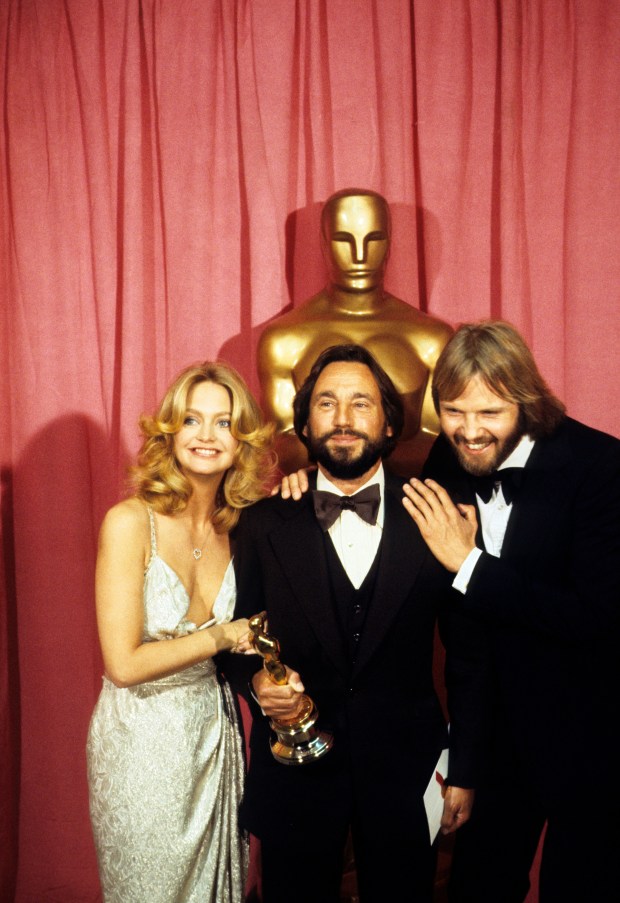The story of Hungarian cinema, like that of any national cinema, is shaped not only by its craftsmen and visionaries, but by the greater sociopolitical forces of its times. And so in tempest-tossed Hungary the story is frequently a story of exile.
This fact is exemplified by the career of one of the greatest native Hungarian film artists, Vilmos Zsigmond, who died on Jan. 1, 2016.
Zsigmond was born in 1930 in Szeged, on the river Tisza, in the region of the country called the Dél-Alföld, or the Southern Great Plain—a part of the country fertile in both agriculture and genius. He was 19 when the Hungarian People’s Republic was declared (it began with the farcical election of 1949 and ended 40 years later); and he was 26 during the Hungarian revolution, a nationwide uprising against the Soviet Union’s puppet-state control of the country. That revolution began with mass demonstrations, continued through fierce guerrilla street fighting, and ended with the Soviets’ reassertion of their dominance at the end of a tank gun.
Zsigmond was established in Budapest by then, having arrived in the capital to study cinematography at the Academy of Drama and Film. With his friend and former classmate László Kovács, he hit the streets during the revolution, documenting it on reams of 16mm film. After it became clear that what they were shooting was not the dawning of a new day for Hungary but instead a brave and futile stand, both men hightailed it over the Austrian border with the canisters of film in hand. Zsigmond, who outlasted the Soviets, wouldn’t shoot his first feature film in Hungary until 2002, at the age of 72.
But the years in between were far from lost. Zsigmond’s portfolio as a cinematographer included seminal 1970s works like Peter Fonda’s The Hired Hand and John Boorman’s Deliverance. That decade (and the early 1980s) also saw his epoch-defining collaborations with Robert Altman (McCabe & Mrs. Miller, Images, The Long Goodbye), Brian De Palma (Obsession, Blow Out), and Michael Cimino (The Deer Hunter, Heaven’s Gate) and the almost painterly special-effect photography of 1977’s Close Encounters of the Third Kind, whose director, Steven Spielberg, first collaborated with Zsigmond a few years earlier on The Sugarland Express.
Years of unrecognized toil, however, lay between initial exile and these justly celebrated performances.
Zsigmond’s first 10 years in America were hard ones, working at photo labs and portrait studios and fumbling his way toward English fluency. But he—along with lifelong friend Kovács—began working around Hollywood on low-budget, non-union, zero-prestige moviemaking. On films with titles like The Sadist (1963) and Psycho a Go-Go (1965), using a small crew and minimum equipment, taking cues from available light while shooting on location, often doing double-duty as his own camera operator, Zsigmond developed an approach that was inimical to standard A-list studio filmmaking. But it prepared him to be an ideal realizer of the visions of the directors who represented the so-called New Hollywood, those moving away en masse from default soundstage shooting.
Beginning in the late 1960s, the defining aesthetic attribute of the period to which Zsigmond gave so much is often described as a new “realism,” a vague term that means very different things in different times and places. (Zsigmond, for example, came of age during the heyday of “socialist realism,” which in cinema often meant paeans to tractors and factory floors in which, one suspects, very few survivors of the Stalin period would recognize their lived experience.)

If Zsigmond was a realist, he defined an awfully wide variety of realities. The chill, fogged texture of McCabe & Mrs. Miller, achieved through a postproduction process called “flashing,” differs enormously from the surreally lucid, hyaline quality of Images—two films by the same director. And neither has much in common with the pop-art punch of Blow Out, with its God’s-eye views of Philadelphia’s City Hall and wild split diopter compositions, or the gritty Ashcan School palette of The Deer Hunter, a movie that in its early mill-town chapters suggests a cinematic reimagining of Thomas Anshutz’s 1880 painting The Ironworkers’ Noontime a century down the line.
In fact, Zsigmond took guidance from painting, as he describes in an interview in the 1984 book Masters of Light. “I think it helped me a great deal that in Hungarian film school … we studied the history of painting,” he says. “We went to museums at least once a week. It helps to learn feelings for compositions, lights, colors and all that. If you start living in an artistic world, you start thinking like an artist. … Composition is in my blood. I walk into a room and I set the camera and it’s there; I cannot explain why. Many directors start trying to get another composition but often end up back where I set the camera. Why? I don’t know. It’s a feeling. But that shot expressed what the whole scene is about.”
Zsigmond’s great works were made in or on the edge of the American industry, but his idea of cinematography as an art that owes much to the old masters is in the European vein. He put his European training to the study of distinctly American subjects. While adapting to the needs of different projects and directors, Zsigmond’s best work is unified not by prosaic realism, but by a sensibility that conveys melancholy remembrance and lyrical enchantment. It’s a Hungarian sensibility—belonging to the old Hungary, before World War II. It suggests the Hungary of Gyula Krúdy, another lover of beauty, of whom Hungarian-American historian and émigré John Lukacs has written: “He traced the still visible path of sunken memories: the still living fragrances, colors, shapes, clouds of the past.”
Even when his subjects were unmistakably contemporary and concrete, Zsigmond often lent them the quality of remembrance or dream. He didn’t just capture the moment, but something outside of it, and this is one guarantee of his immortality.